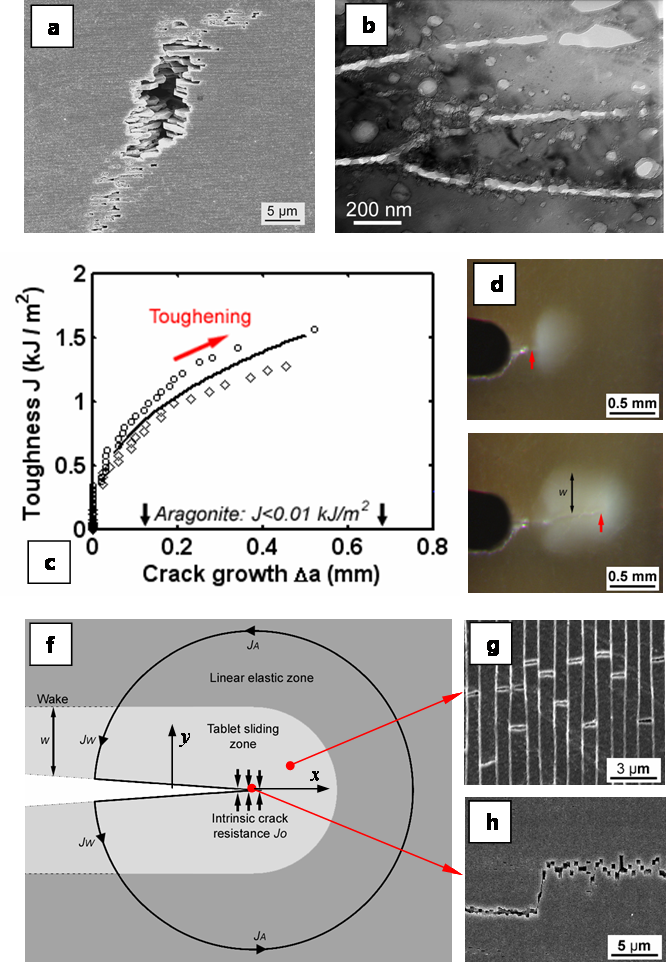Research / Micro/NanomechanicsFailure of Structural Biomaterials
Structural biomaterials are of growing interest in the mechanics community because of their remarkable mechanical performance. The case of mother of pearl (nacre) from seashell is an excellent example. Mostly made of microscopic tablets of aragonite (a ceramic as fragile as chalk), nacre is orders of magnitude more fracture resistant. This quality is essential to the strength of the shell and to the survival of the animal. Several features at the nanoscale were proposed to explain the toughness of nacre. Recently, the Espinosa group advanced tablet waviness at the meso-scale combined with the stretching and large deformation capabilities of the biopolymer at the interface of the tablets as the most plausible explanation for the high toughness exhibit by nacre.

In the above figure:
- (a) Large defect inside the nacreous layer (SEM)
- (b) Stacking fault in the tablet layers (TEM)
- (c) Crack resistance (JR) curves for nacre from two experiments
- (d) Prior to crack advance a tablet sliding zone develops ahead of the crack tip
- (e) As the crack advances it leaves a wake of inelastically deformed material
- (d and e) Optical images; red arrow shows location of crack tip at the onset of crack propagation and the steady state regime
- (f) Schematic showing the J contour used in the model
- (g) Crack deflection and debonding of tablets along a crack
- (h) Tablet sliding on one another
- (g and h) scanning electron micrographs

